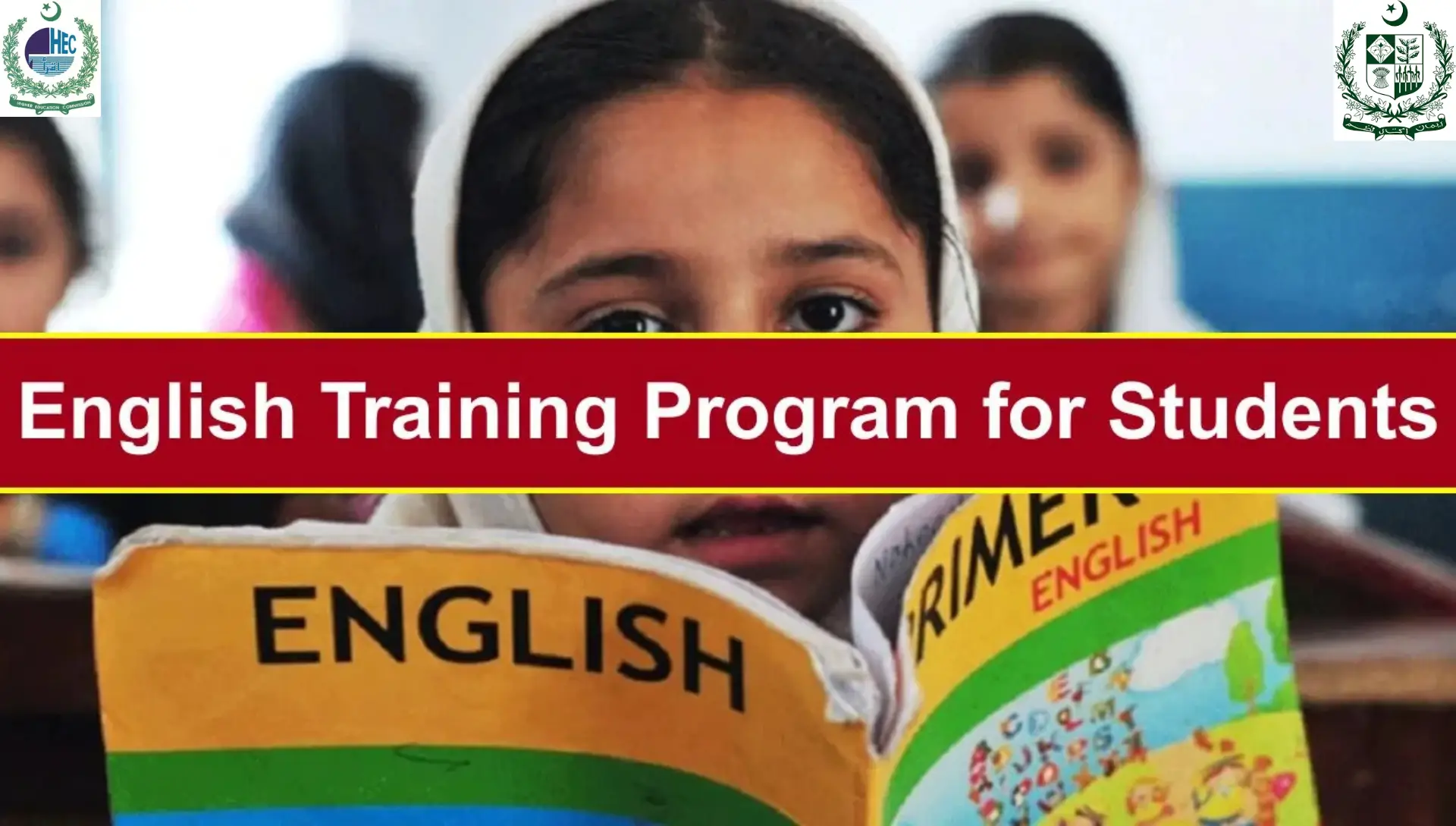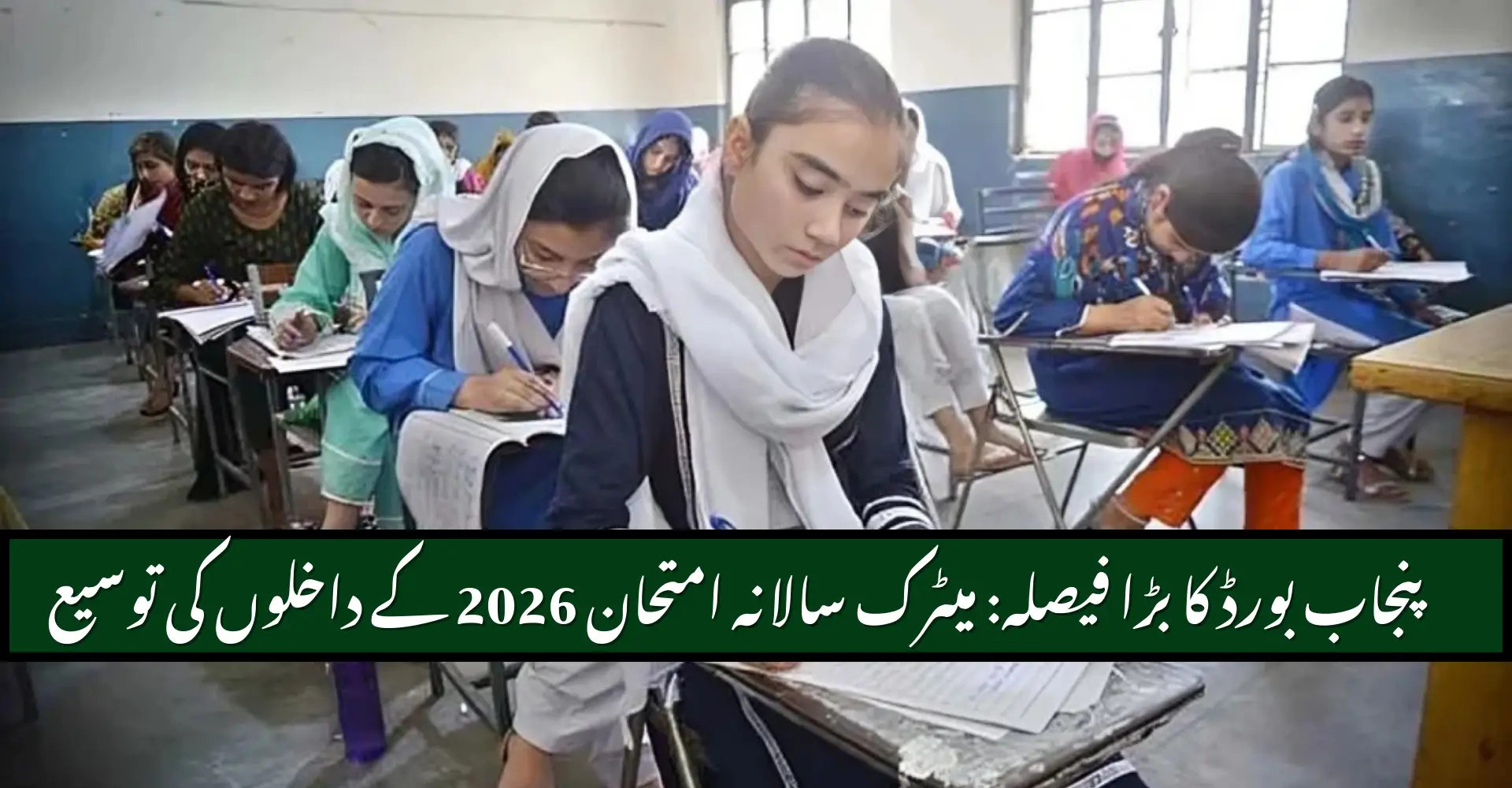Big News: Punjab Govt Announces Rs. 12 Billion English Training Program for Students and Teachers 2025. Many parents and teachers across Punjab have long asked: “How will government schools match the English level of private institutions?” The Punjab English Training Program 2025 is the government’s clear answer. With a Rs 12 billion investment, the province is launching comprehensive English-language training for both students and teachers, blending technology, curriculum reform, and professional certification to build a stronger educational foundation.
English Training Initiative
The Punjab School Education Department (SED) will lead the project under the supervision of Chief Minister Maryam Nawaz Sharif. The core objective is to improve English fluency, comprehension, writing, and teaching capacity in all government institutions—from primary schools to higher-secondary levels.
Key program pillars include:
- Curriculum modernization aligned with Cambridge and CEFR standards.
- Digital learning tools such as interactive apps, e-books, and AI-based pronunciation labs.
- Intensive teacher training and certification courses.
- Continuous performance evaluation through annual assessments.
Why Punjab Needs an English Upgrade
Bridging the Public-Private Education Gap
Private schools have long maintained an edge due to English-medium instruction. The new provincial program aims to eliminate that divide by providing equal access to international-standard English education in government schools.
Preparing Students for Global Opportunities
Fluent English is now vital for admission into universities, jobs, and scholarships abroad. The training initiative ensures that students from public schools can compete globally, enhancing Pakistan’s human-capital index.
Focus on Students and Teachers
Student-Centric Learning Approach
Students will experience interactive classroom environments instead of rote learning. Activities will include debates, creative writing workshops, pronunciation labs, and comprehension games to make English learning enjoyable and practical.
Teacher-Focused Professional Development
Teachers form the foundation of the program. They will attend district-level English Proficiency Workshops followed by online certification programs in collaboration with language universities and international partners.
These courses will cover:
- Advanced grammar and phonetics
- Modern teaching methodologies
- Digital lesson-planning
- Evaluation and feedback techniques
Implementation Plan and Budget Distribution
The initiative will be executed in three phases starting early 2026.
| Component | Description | Budget Allocation (Rs) | Timeline |
|---|---|---|---|
| Teacher Training Workshops | Capacity building & certification | 4 Billion | Phase 1 (2026 Q1–Q2) |
| Student Learning Modules | Classroom & e-learning content | 3 Billion | Phase 2 (2026 Q3–Q4) |
| Digital Tools & Apps | Smart classrooms & language labs | 2 Billion | Phase 3 (2027 Q1) |
| Curriculum Development | Updated English textbooks | 1 Billion | Continuous |
| Monitoring & Evaluation | Independent quality audits | 2 Billion | Annual |
The School Education Department will coordinate with district education authorities, British Council Pakistan, and Allama Iqbal Open University’s Distance-Learning Wing to ensure standardization and quality.
Objectives of the Rs 12 Billion English Program
- Enhance English proficiency among students & teachers.
- Prepare students for higher education and international exams such as IELTS and TOEFL.
- Bridge the public-private learning gap.
- Empower teachers through continuous training and global certification.
- Promote digital inclusion via e-learning tools.
- Strengthen communication and confidence among rural students.
Expected Benefits of the Initiative
For Students
- Access to interactive, activity-based learning.
- Improved performance in board exams and interviews.
- Exposure to global academic vocabulary.
- Confidence in speaking English in public forums.
For Teachers
- Opportunity to gain internationally recognized teaching certificates.
- Enhanced classroom performance and job promotion potential.
- Access to digital teaching aids and lesson resources.
Digital Integration and Modern Tools
Punjab’s education system is shifting from chalkboards to smart boards. The program integrates technology-driven modules such as:
- Learning Management Systems (LMS) for progress tracking.
- AI-powered pronunciation correction apps.
- E-classrooms connecting urban mentors with rural schools.
- Audio-visual content to improve listening comprehension.
This aligns with Punjab’s Vision 2026 Digital Education Roadmap, ensuring inclusive learning for every student regardless of location.
Challenges and Monitoring Mechanisms
While the initiative is ambitious, success depends on effective execution. Experts point out three potential challenges:
- Teacher Absenteeism – Needs strict attendance and follow-up.
- Infrastructure Limitations – Rural areas require stable internet & devices.
- Quality Assurance – Continuous monitoring is essential.
To counter these, the Punjab government plans to introduce a central digital dashboard that tracks participation, completion, and outcomes for each district. Third-party audits by Punjab Education Sector Reform Unit (PESRU) will ensure transparency.
Expert Opinions
Educationists have hailed the step as “transformational.”
“For decades, English proficiency has divided our students by class. This Rs 12 billion project can finally bridge that divide,” says Dr. Hina Ali, education analyst at Punjab University.
Economists believe that improved English literacy could raise employability by 15–20 percent across Punjab within five years, particularly in IT, freelancing, and tourism sectors.
Global Parallels and Benchmarks
Countries such as Malaysia, Singapore, and the Philippines transformed their public-school systems by emphasizing English fluency. Punjab aims to replicate these models while maintaining Urdu and regional languages as cultural anchors.
International collaborations are expected with:
- British Council Pakistan
- US Education Foundation (Usefp)
- Cambridge Assessment International Education
Impact on Future Generations
By 2030, the government projects that over 5 million students and 200,000 teachers will have benefited from structured English-language programs.
Long-term outcomes include:
- Higher secondary-school pass rates.
- Better performance in standardized tests.
- Increased digital literacy and job readiness.
Comparison: Current vs Proposed System
| Feature | Before Program | After Implementation |
|---|---|---|
| Teaching Medium | Urdu-dominant, limited English use | English-interactive modules |
| Teacher Training | Irregular workshops | Continuous certification |
| Student Participation | Passive memorization | Active speaking & writing |
| Digital Access | Minimal ICT tools | Smart classrooms & apps |
| Global Alignment | Local focus only | Linked to CEFR / Cambridge |
FAQs
Q1: What is the Punjab English Training Program 2025?
It’s a Rs 12 billion initiative by the Punjab government to train both students and teachers in English language skills through modern courses, apps, and updated curricula.
Q2: Who will benefit from this program?
The program targets public-school students and teachers across all districts of Punjab, especially rural areas.
Q3: When will the program start?
Implementation will begin in early 2026 with pilot projects in selected districts before expansion across the province.
Q4: Which institutions are partnering in the project?
Partners include the Punjab School Education Department, British Council Pakistan, and AIOU for online training support.
Q5: How will the program impact Punjab’s education system?
It will improve English proficiency, bridge the public-private gap, and enhance employability for millions of students by 2030.
Conclusion
The Punjab Govt English Training Program 2025 marks a historic Rs 12 billion commitment to modernizing public-sector education. If executed effectively, it can empower teachers, inspire students, and place Punjab on the global education map.














